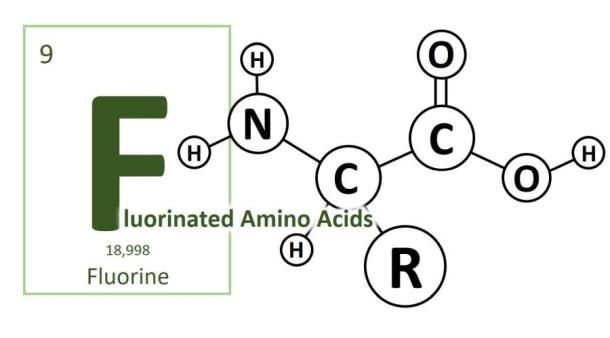Welcome to Iris Biotech
For better service please confirm your country and language we detected.

For better service please confirm your country and language we detected.

Thank you very much for your interest in our products. All prices listed on our website are ex-works, Germany, and may attract customs duties when imported.
You may/will be contacted by the shipping company for additional documentation that may be required by the US Customs for clearance.
We offer you the convenience of buying through a local partner, Peptide Solutions LLC who can import the shipment as well as prepay the customs duties and brokerage on your behalf and provide the convenience of a domestic sale.
Continue to Iris Biotech GmbHSend request to US distributorPublished on 08/12/2020

The development of new peptide drugs is often hampered by limited affinity, stability, and rapid digestion by human proteases. The introduction of non-proteinogenic amino acids with derivatized side-chain functionalities is reported as a powerful tool to improve kinetic and thermodynamic properties of the respective peptides as well as to increase proteolytic and structural stability. Within this context, the modification of amino acids with fluorine for enhanced metabolic stability and increased lipophilicity has gained widespread attention dating back to the 1950s, when J. Fried and J. Sabo reported the first fluorine-containing drug fludrocortisone.
The carbon-fluorine bond is characterized by a special hydrophobic character with a high dipole moment, described as polar hydrophobicity. Having the highest electronegativity of all elements imbues fluorine with unique properties, influencing neighbouring groups. One example is the reduction of the nucleophilicity of neighbouring amino and hydroxy groups. Consequently, the α-amino functions in α-trifluoromethyl amino acids or hydroxy functions in corresponding serines do normally not have to be protected during standard SPPS protocols. Besides, trifluoromethylated derivatives are characterized by their increased sterical requirement impacting their conformational behavior. Both electronic and steric reasons render a cis-amide bond in α‑trifluoromethyl amino acids more favorable, inducing the formation of β-turns. In the case of the synthesis of cyclic peptides, cyclization yields can thereby by increased.
Besides, Iris Biotech provides amino acids with a trifluoromethyl substitution in the side chain. The CF3 group can be attached to aromatic rings of Phe, Trp and Tyr, added to functional groups like thiol, hydroxyl or amine or be formed by replacing hydrogen in methyl groups.
Furthermore, we provide a large set of γ,γ-difluoro amino acids. Whereas fluorination on the β-position might lead to racemization on the α-position, even double substitution on the γ-position results in derivatives, which maintain their optical configuration. Of course, we also provide a huge selection of other difluoro amino acids. Especially for prolines, various difluoro derivatives are available.
Below, please find an exemplary excerpt of our portfolio of fluorinated amino acids. Almost endless combinations are available or can be synthesized based on your custom inquiry.
In summary, the incorporation of fluorinated amino acids into peptides allows for the implementation of structural diversity, the fine-tuning of polarity, and lipophilicity and the introduction of new conformational and folding moieties. In addition, as fluorine is typically not found in natural peptides, 19F NMR spectroscopy serves as sensitive and powerful tool facilitating the detection of even minor differences in the environment of the label.
Please also see our next-generation hydrolysis-stable phosphono-analogs of pSer, pThr, and pTyr. Fluorination renders the phosphonic acid more acidic and thus an even better mimic of the parent phosphoamino acid. For more detailed information, please see https://www.iris-biotech.de/global/blog/product-focus-next-generation-phosphoamino-acid-analogs/.
References: